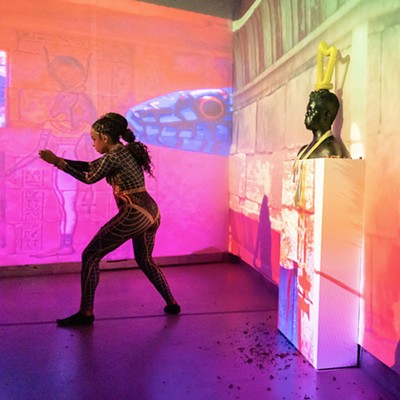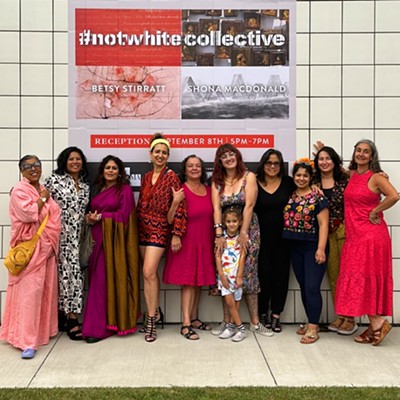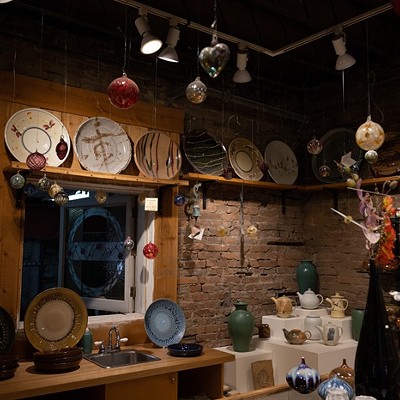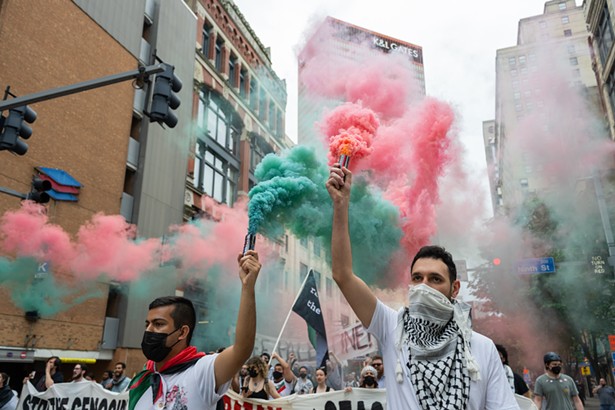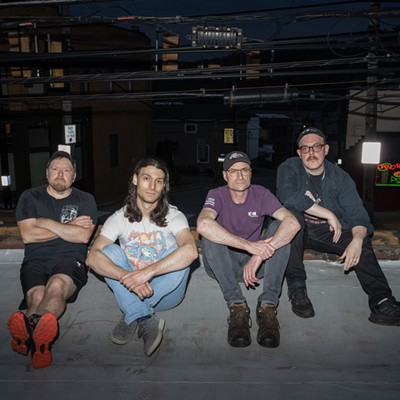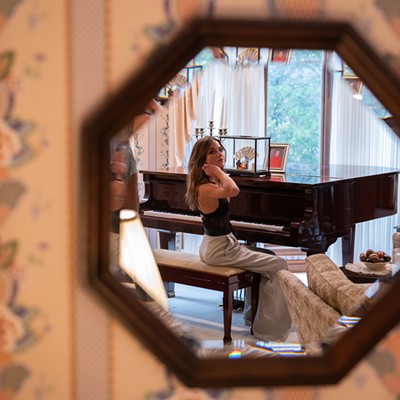
Ten Cuban-born artists will be represented at the BoxHeart exhibition, now on view through Nov. 4. Del Caimán, an organization dedicated to showcasing Cuban art, organized the event.
BoxHeart has promoted the show as the first Cuban art exhibit of its kind to come to Pittsburgh. As explained in an email from the longtime Bloomfield gallery, With Eyes of Stone and Water was presented initially at the University of Havana, then in New York City, and is touted as featuring works from "Cuba’s top artists," including Eliseo Valdés Erustes, Nadia García Porras, Juan Carlos Verdial, and others.
Rafael Migoyo, the president of Del Caimán, is listed as the exhibit’s guest curator, though he prefers the term co-curator.
“I call it co-curating because I don’t want to take all the credit for the conversations I’ve had with the artists,” Migoyo says. “I want the artists to decide for themselves what the works are that truly represent the experience of being in Cuba.”
There are motifs one can lift from the exhibition, but Migoyo says that a dead-end meaning is not what he strove to provide. “We didn’t want to say, the focus is water, trees, dancing, music. No,” Migoyo says, “we’re a big culture. We’re not just all those little things.”
Five portraits by Daniel Ortega Beltrán, one of the younger artists in the exhibit, stand out. Beltrán’s paintings often feature sub-human figures whose bodies are surreal amalgamations of anatomy and objects. In “Super Alfa B2,” the figure’s head is replaced by a medicine bottle solemnly bearing the prescription "Alfa 2b”—a drug used to treat cancer and virus infection.
Beltran’s “Feria de los Pájaros” presents a different vision. The title translates to "Fair of the Birds," the name of an outdoor market in Argentina. The painting shows a figure subsumed by madcap musical instruments — its waist covered by an accordion, its back dominated by a drum. Yet, instead of a head, there is an open birdcage, from which an outstretched bird has taken flight. Is their hope in the headlessness?
Migoyo says that he wanted the exhibition to focus on all levels of emotion, not just their terminal ends. “Not the beginning or the end of an experience, but the transition of going from the beginning to the end,” Migoyo says. “The labor that one goes through — the suffering, the joy, the work that needs to be done in order to get somewhere.”
A sense of transition and movement runs throughout the works, including Orlando Rodríguez Barea’s representations of ships and water. His series of works entitled Travesía, meaning “crossing,” depicts ship-like structures with scaled-down people around them. In “Travesía N°7,” the people evolve from fish to human, or vice versa.
“One person might enter the canvas and solve the problem of ‘How do I navigate this?’ differently from the next,” Migoyo says. “Particularly when we all have different destinations that we want to reach.”
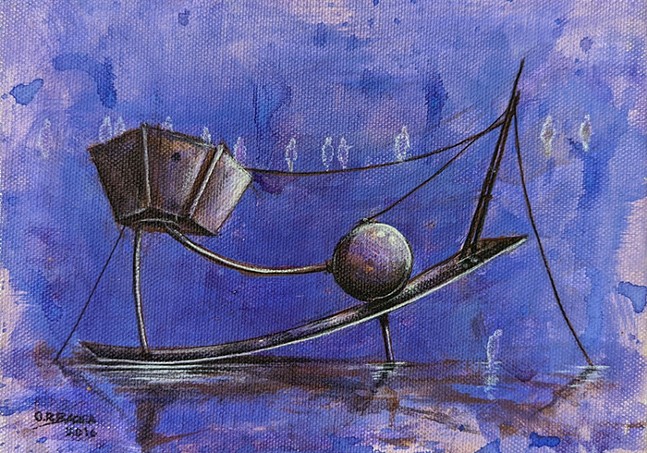
Also on view are works by Evelio Toledo Quesada, Isolina Limonta Rodriguez, and Juan Blanco Lozano.
The exhibit’s artists represent a range of Cuban experiences, which Migoyo says was important to him when creating Del Caimán. His father was a manager for several popular artists in Cuba, helping them get their work into galleries for exhibition. But once Migoyo’s family moved to America, his father's opportunities fizzled. “Because of the translation — not being able to speak English — and the difference in culture, he couldn’t keep that passion work going,” Migoyo says.
Migoyo created Del Caimán as a response to that experience, to ensure that Cuban artists be taken seriously around the world. However, international exhibitions present their own set of problems, and Migoyo is aware of the cultural confusion that can arise when showcasing Cuban art in a foreign country.
“There’s a lot that can be lost in translation,” Migoyo says.
When curating the exhibition, Migoyo says he focused on the emotion behind the works, and how the art can ring true in an international setting while retaining its Cuban origins.
“When you go to Cuba and you’re standing on the Malecon, the famous walkway that runs parallel to the harbor, and you’re looking out and hearing the water crash onto the wall and feeling the water hit you on the face — that can happen all over the world, but the way you feel in that situation is unique,” Migoyo says.
Walking through the exhibit, one need only look around to grasp the diversity of style that Migoyo praises in the artists’ works. Barea’s celestial depictions of oceans are balanced by artists like Jorge Hidalgo Pimentel, who works with an alchemy of paint, petroleum, and gasoline to create smoldered textures evocative of the mystical spirits that inspire his 60 years of work as an artist.
Despite the differing techniques, Migoyo says he sought to represent Cuban artists’ inescapable persistence.
“One of the things that we focused on was asking ourselves, what are these emotions, what are these fundamental aspects of Cuban culture and identity, that inspire us to get off the floors and dance?” Migoyo says. “What are the things that get us to dance all night and laugh and cry and suffer and continue to move forward even with the suffering?”
Del Caimán: With Eyes of Stone and Water. Continues through Nov. 4. BoxHeart Gallery. 4523 Liberty Ave., Bloomfield. Free. boxheartgallery.com


